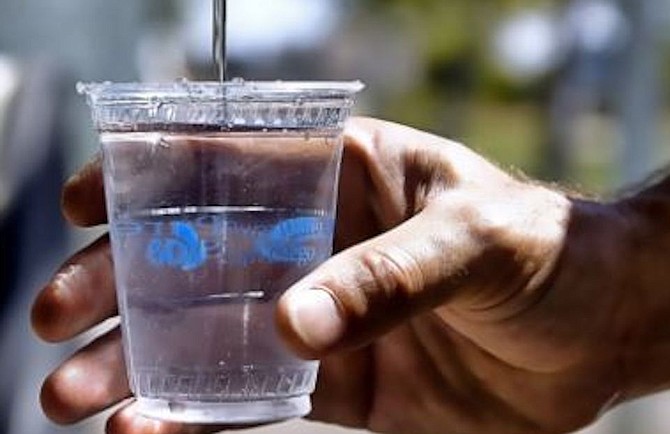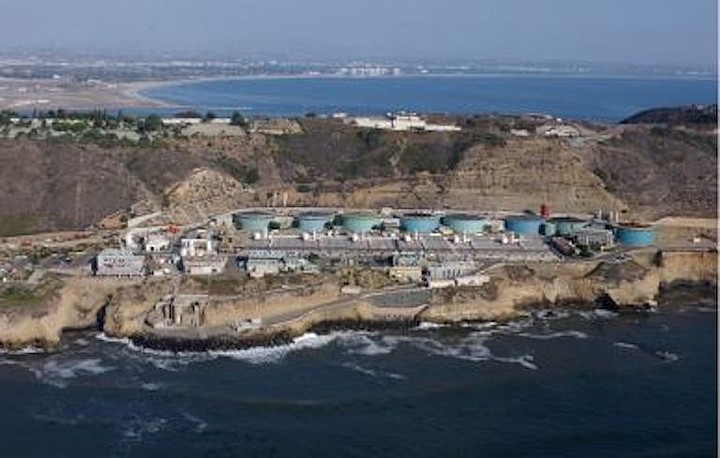 Facebook
Facebook
 X
X
 Instagram
Instagram
 TikTok
TikTok
 Youtube
Youtube

San Diego's sewer rates haven't gone up in ten years. Now, the city is playing catch up with a four-year string of rate hikes they say is needed to maintain the aging system, and fund the Pure Water project.
The city says the increase was long overdue. But so are the unpaid water bills of thousands of lower income San Diegans. California's pandemic water shutoff moratorium is set to end September 30.
"Our workers have brought in overdue bills ranging from $800 to $3,000 dollars, said Norma Sanchez, with the San Diego Workers Benefit Council, which represents low paid workers.
"Over 11,200 San Diegans each owe more than $1,000 dollars alone in overdue water bills," she told the city council last week before they approved a wastewater rate increase that will start at five percent in January 2022.

From there, sewer rates just keep rising; up to four percent in 2023 and 2024, and up to three percent in 2025. Water rates will increase three percent due to the County Water Authority having raised rates for imported water.
Workers say their wages can't keep up.
Council members blamed the past administration for leaving them the dirty work of raising rates, which should have happened as small increases over time rather than a "shock event." A wastewater cost of service study hasn't been updated since 2007.
A recent study the city conducted on sewer rates found that without increases, there won't be enough revenue for necessary wastewater and recycled water services between 2022 and 2025.
All wastewater from San Diego and several surrounding municipalities goes to pump station 2 on Harbor Drive, then to the top of Pt. Loma where "gravity takes hold," the city says, as the sludge moves into the treatment plant.
The city is using pumps that are about 29 years past their expected useful life. A burst pipe or broken pump could back up the entire system and spew raw sewage into waterways.
"The rent is too damn high, wages are too damn low," said councilmember Sean Elo-Rivera. "Unfortunately, we have to properly fund our infrastructure," which will save ratepayers money in the long run.
"We're also going to be addressing a very inequitable way residents have been subsidizing industrial customers for decades now."
The increases will affect different ratepaying classes differently. Single families, for example, represent over 80 percent of customers, and their rates will see the greatest climb, increasing as a whole by 16.7 percent, said Lisa Celaya, assistant director of public utilities.
"Conversely, the multifamily class will decrease as a whole by five percent."
Robert Campbell, a consultant for CalWest apartments, disputed the city's calculations, saying the water rate doesn't properly account for outdoor water use, which will result in overcharges.
CalWest has 12 multifamily complexes within the city. Most tenants are low income, and get their utility bills from CalWest separate from their rent.
Single family customers are billed during their lowest water use, the winter monitoring period, Campbell said. But no such distinction is made for multifamily customers in calculating outdoor irrigation that doesn't return to the system. "This disadvantages multifamily residents to the detriment of mostly the low income."
Councilmember Raul Campillo encouraged everyone who needs help with unpaid water bills to go to the San Diego Housing Commission website to apply for assistance with past utility bills.
"The money is there right now."
Ceyala said the city is also actively working with the state, and anticipates additional funds to address any past non-payments. More information on that will be available in late fall or early winter.


San Diego's sewer rates haven't gone up in ten years. Now, the city is playing catch up with a four-year string of rate hikes they say is needed to maintain the aging system, and fund the Pure Water project.
The city says the increase was long overdue. But so are the unpaid water bills of thousands of lower income San Diegans. California's pandemic water shutoff moratorium is set to end September 30.
"Our workers have brought in overdue bills ranging from $800 to $3,000 dollars, said Norma Sanchez, with the San Diego Workers Benefit Council, which represents low paid workers.
"Over 11,200 San Diegans each owe more than $1,000 dollars alone in overdue water bills," she told the city council last week before they approved a wastewater rate increase that will start at five percent in January 2022.

From there, sewer rates just keep rising; up to four percent in 2023 and 2024, and up to three percent in 2025. Water rates will increase three percent due to the County Water Authority having raised rates for imported water.
Workers say their wages can't keep up.
Council members blamed the past administration for leaving them the dirty work of raising rates, which should have happened as small increases over time rather than a "shock event." A wastewater cost of service study hasn't been updated since 2007.
A recent study the city conducted on sewer rates found that without increases, there won't be enough revenue for necessary wastewater and recycled water services between 2022 and 2025.
All wastewater from San Diego and several surrounding municipalities goes to pump station 2 on Harbor Drive, then to the top of Pt. Loma where "gravity takes hold," the city says, as the sludge moves into the treatment plant.
The city is using pumps that are about 29 years past their expected useful life. A burst pipe or broken pump could back up the entire system and spew raw sewage into waterways.
"The rent is too damn high, wages are too damn low," said councilmember Sean Elo-Rivera. "Unfortunately, we have to properly fund our infrastructure," which will save ratepayers money in the long run.
"We're also going to be addressing a very inequitable way residents have been subsidizing industrial customers for decades now."
The increases will affect different ratepaying classes differently. Single families, for example, represent over 80 percent of customers, and their rates will see the greatest climb, increasing as a whole by 16.7 percent, said Lisa Celaya, assistant director of public utilities.
"Conversely, the multifamily class will decrease as a whole by five percent."
Robert Campbell, a consultant for CalWest apartments, disputed the city's calculations, saying the water rate doesn't properly account for outdoor water use, which will result in overcharges.
CalWest has 12 multifamily complexes within the city. Most tenants are low income, and get their utility bills from CalWest separate from their rent.
Single family customers are billed during their lowest water use, the winter monitoring period, Campbell said. But no such distinction is made for multifamily customers in calculating outdoor irrigation that doesn't return to the system. "This disadvantages multifamily residents to the detriment of mostly the low income."
Councilmember Raul Campillo encouraged everyone who needs help with unpaid water bills to go to the San Diego Housing Commission website to apply for assistance with past utility bills.
"The money is there right now."
Ceyala said the city is also actively working with the state, and anticipates additional funds to address any past non-payments. More information on that will be available in late fall or early winter.
Comments